Cry Havoc Vol. 1: Mything in Action is Bloody Perfect
Main Art by Ryan Kelly & Emma Price
Comics Reviews Cry Havoc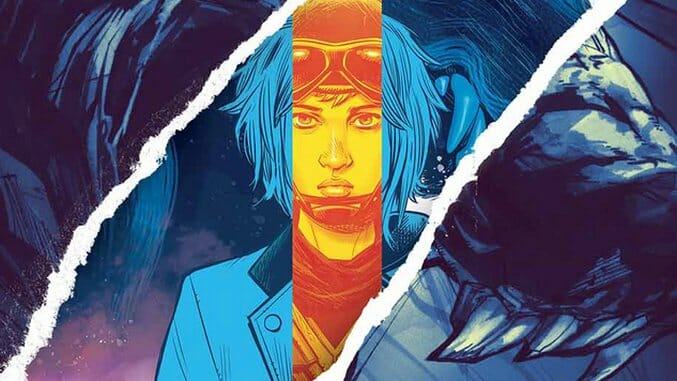
Writer: Simon Spurrier
Artist: Ryan Kelly w/ Nick Filardi, Lee Loughridge, Matt Wilson & Emma Price
Publisher: Image Comics
Release Date: August 17, 2016
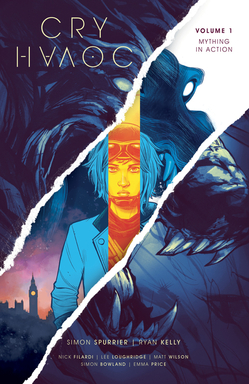 The concept of “true names” has resonated throughout folklore and myth since before the days of biblical antiquity. Names have power. Names ascribe weight to the immaterial, form to the incorporeal, clarity to the ineffable. This power sits at the cornerstone of not only myth, but of what we commonly define as speculative fiction. And that applies to Cry Havoc Vol. 1: Mything in Action, a modern fantasy-military drama that is not about a lesbian werewolf who goes to war. Except, well, it sort of is.
The concept of “true names” has resonated throughout folklore and myth since before the days of biblical antiquity. Names have power. Names ascribe weight to the immaterial, form to the incorporeal, clarity to the ineffable. This power sits at the cornerstone of not only myth, but of what we commonly define as speculative fiction. And that applies to Cry Havoc Vol. 1: Mything in Action, a modern fantasy-military drama that is not about a lesbian werewolf who goes to war. Except, well, it sort of is.
Writer Simon Spurrier and artist Ryan Kelly’s Cry Havoc is the story of Louise Canton, a street-performing violinist-turned-lycanthropic-living-myth struggling to hold onto her humanity as she reckons with what she’s become. While wrestling with this new development, Lou inadvertently attracts the attention of a clandestine agency that promises to help her control, and ultimately extinguish, her supernatural persona. In return, she’s conscripted as a reconnaissance attaché to a special unit of similarly afflicted soldiers deployed to Afghanistan in search of a mysterious enemy. What Lou discovers through her journey irrevocably changes not only her life, but the lives of all those around her. Between the metaphorical wolves of chaos and control, the mundane and the unknown, which one will she feed?
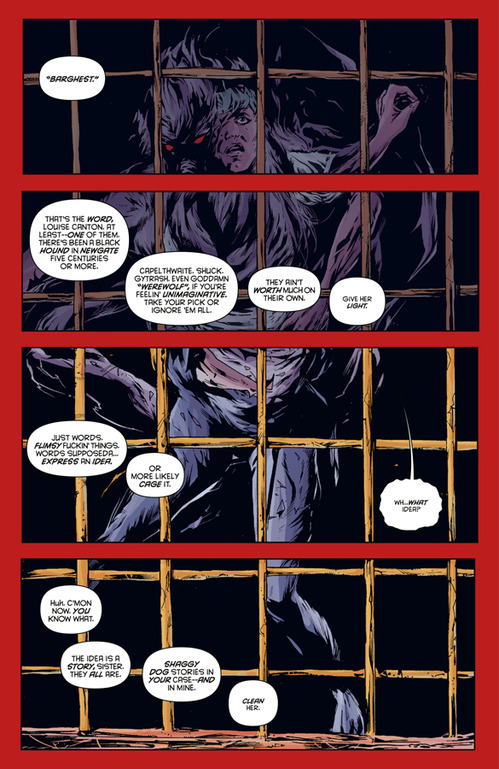
Cry Havoc Interior Art by Ryan Kelly & Lee Loughridge
Cry Havoc’s writing delivers a wealth of whip-smart genre savviness and folkloric erudition, courtesy of Spurrier’s deft plotting and approachable dialogue. The appeal of Lou as a character is that, at some point, one has either crossed paths with someone like her or perhaps has even been her. Her perpetual joblessness, search for self-certainty and attempts to maintain close relationships resonate deeply. The balancing act of her virtues and shortcomings, her bravery and musicality juxtaposed by her flakiness and profanity, neither diminishes nor elevates her beyond the reach of approachability, but humanizes her. As with so many other great works of contemporary supernatural fiction, the cascading consequences of her condition serve as the framework through which the raw human heart of her story emerges.
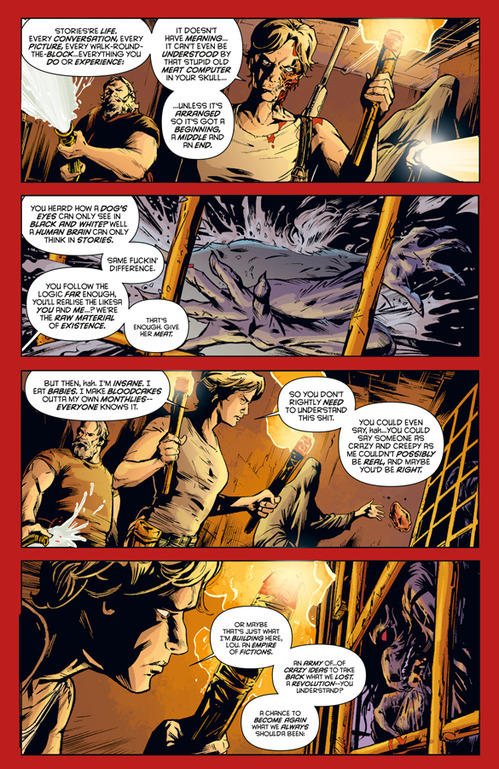
Cry Havoc Interior Art by Ryan Kelly & Lee Loughridge
Of course, Spurrier’s talents aren’t the only ones on display. Kelly’s creature designs, particularly mid-transformation, along with his well-drawn compositions and emphasis on framing characters with shadows, are indelible in bringing out the best in Spurrier’s prose. Not to mention Emma Price’s visually arresting cover layouts, each accentuated with quotes from the likes of William Butler Yeats and Joseph Conrad that make intriguing bite-size morsels of thematic foreshadowing. These stylistic decisions help accentuate the comic’s structure, which warrants appreciation on its own. Lou’s story is divided into three periods told out of chronological order, with each section drawn by Kelly but colored by the rotating ensemble of Nick Filardi, Lee Loughridge and Matt Wilson. Whether it’s the granular textures of sand and sun-drenched discoloration of Wilson’s work on the Afghanistan sections, Filardi’s scintillating light trails in the London night club where Lou performs or the blood-drenched gutters of Loughride’s pages, the book’s visual variety never fails to impress while at the same time presenting itself as a consummate work.

Cry Havoc Interior Art by Ryan Kelly & Matt Wilson
As a whole, Cry Havoc’s premise is a remarkable example of recontextualizing mythological archetypes in a contemporary setting. Stories that are about the nature of stories, especially in the case of those personified as anthropomorphic entities, are anything new to the world of graphic novels. One needn’t look any further than Bill Willingham and Mark Buckingham’s Fables, Mike Carey and Peter Gross’ The Unwritten or Neil Gaiman’s magnum opus The Sandman, to name a few. But what distinguishes Cry Havoc from its peers is its willingness to dive deeper into the prototypical minutiae of regional mythology and folklore in order to pull inspiration. Ever heard of the Penanggalan? What about the Adze? Oh man, just wait until you get a load of the horny Nordic Were-boar. Each revelatory transformation yields a creature that feels at once alien yet instantly recognizable on an archetypal level, culminating in an all-out battle royale of extraordinary carnage in the book’s finale.

Cry Havoc Interior Art by Ryan Kelly & Matt Wilson
Cry Havoc is so many things. It’s entertaining and edifying, at frequent times hilarious, heart-warming and terrifying. It’s provocative without being impenetrable, a book that demands appreciation, deliberation and close reading that thoroughly satisfies on visual, narrative and structural levels. Were Cry Havoc to conclude with this volume, it would still reign as of one of the most impeccably well-crafted and rewarding reads that 2016 has to offer. One can hope that this story’s beginning is not an end itself, but rather a sign of even greater things to come.
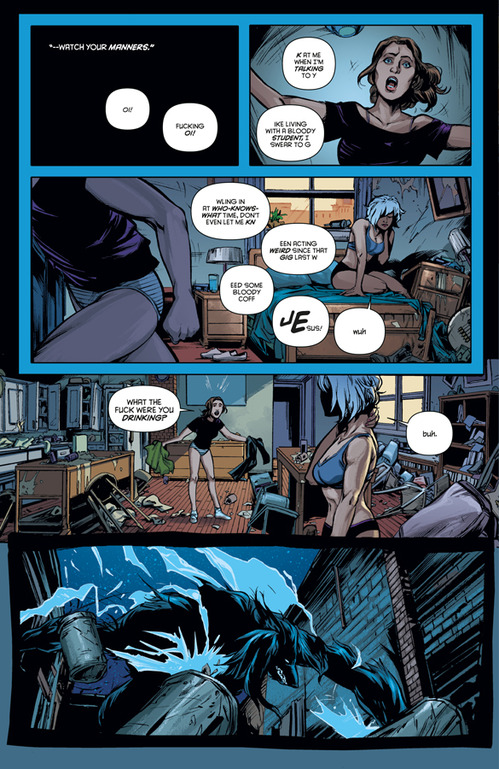
Cry Havoc Interior Art by Ryan Kelly & Nick Filardi